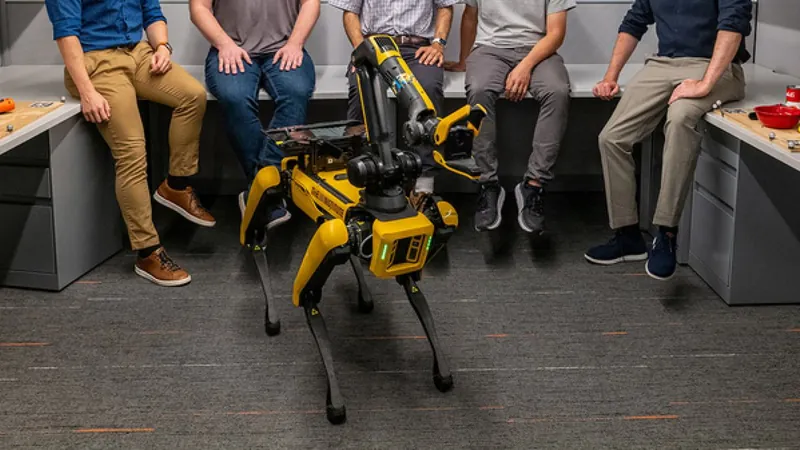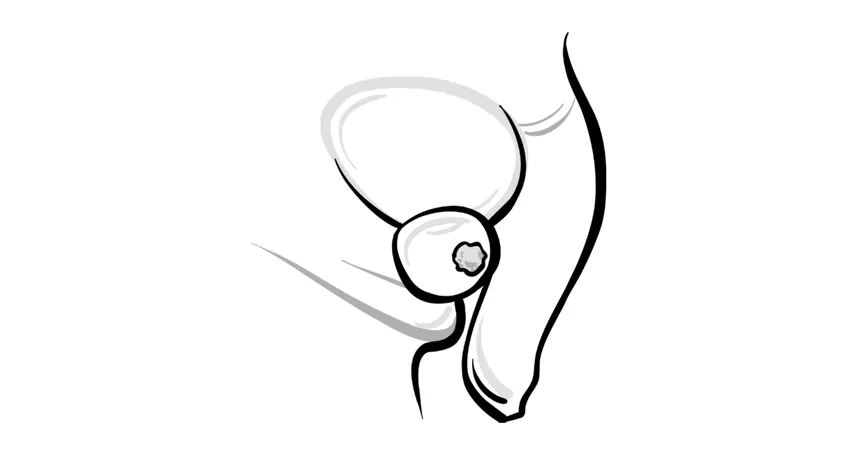
Boston Dynamics' Robot Dog Spot Takes Fetch to the Next Level—MIT's Revolutionary AI Makes it Possible!
2024-10-31
Author: Ming
Boston Dynamics' Robot Dog Spot Takes Fetch to the Next Level—MIT's Revolutionary AI Makes it Possible!
In an exciting advancement for robotics, Boston Dynamics' dog-like robot, Spot, is now on the verge of mastering the classic game of fetch. This breakthrough can be attributed to a group of researchers at the Massachusetts Institute of Technology (MIT) who have developed a groundbreaking method known as "Clio," which integrates artificial intelligence (AI) and computer vision to help robots accurately locate and interact with objects in their environment.
Integration of Clio and Robotics
Published on October 10 in the prestigious journal IEEE Robotics and Automation Letters, Clio uses a combination of on-body cameras and voice instructions to help robots quickly map their surroundings. It identifies the specific parts of a scene that are essential for completing tasks, while disregarding irrelevant information. This approach employs the theory of “information bottleneck,” allowing a neural network—akin to the way human brains process data—to filter and localize only the necessary segments.
Task Efficiency with AI
As explained by study co-author Dominic Maggio, a graduate student at MIT, this technology optimizes task efficiency. “If I need to retrieve a green book from a pile, Clio processes the entire scene and isolates the relevant segments focused on that specific task. Unnecessary data is virtually discarded, enhancing the robot’s ability to perform with accuracy.”
Showcasing Clio's Effectiveness
The effectiveness of Clio was showcased during a demonstration where the Spot robot was tasked with navigating an office space. Using real-time data processing, Clio generated a virtual map highlighting only the objects pertinent to its instructions, allowing Spot to complete tasks seamlessly.
Revolutionizing Object Identification
This impressive feat is made possible through the integration of large language models (LLMs), which are advanced artificial intelligence systems that evaluate and recognize a diverse array of objects. Typically, previous AI advancements relied on pre-set, curated environments. Clio revolutionizes this process by enabling real-time, task-specific object identification, making it adaptable to unstructured environments.
Innovative Mapping Tool
The system’s innovative mapping tool breaks down scenes into small, manageable segments that a neural network can analyze, pinpointing semantically similar segments that correlate to the task at hand. This way, AI-equipped robots can make nuanced, discriminative decisions almost instantaneously, instead of laboriously processing the entire scene.
Future Applications of Clio
Looking ahead, the researchers have ambitious plans for Clio. “Currently, we give Clio narrow tasks, like locating a deck of cards. However, we aim to evolve it to handle broader, more complex directives suitable for real-world applications such as search and rescue operations, where it would need to find survivors or restore power,” said Maggio.
Conclusion
This technology could indeed pave the way for robot dogs like Spot to engage in activities like playing fetch, offering not only entertainment but also practical applications in various fields. Imagine a future where your robot dog fetches your slippers or assists in emergency scenarios—all thanks to the pioneering work happening at MIT and the integration of sophisticated AI systems.
Stay tuned, as the future of robotic interaction is just a throw away!


 Brasil (PT)
Brasil (PT)
 Canada (EN)
Canada (EN)
 Chile (ES)
Chile (ES)
 Česko (CS)
Česko (CS)
 대한민국 (KO)
대한민국 (KO)
 España (ES)
España (ES)
 France (FR)
France (FR)
 Hong Kong (EN)
Hong Kong (EN)
 Italia (IT)
Italia (IT)
 日本 (JA)
日本 (JA)
 Magyarország (HU)
Magyarország (HU)
 Norge (NO)
Norge (NO)
 Polska (PL)
Polska (PL)
 Schweiz (DE)
Schweiz (DE)
 Singapore (EN)
Singapore (EN)
 Sverige (SV)
Sverige (SV)
 Suomi (FI)
Suomi (FI)
 Türkiye (TR)
Türkiye (TR)
 الإمارات العربية المتحدة (AR)
الإمارات العربية المتحدة (AR)